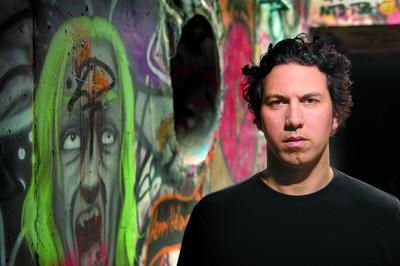Life beneath city inspires local writer

Las Vegas, April 2002. Timmy “T.J.” Weber went on a murder rampage, killing his girlfriend and her son, and raping her teenage daughter.
Weber left town, but soon came back to the scene of the crime, a house on First Street. This time, he beat up his girlfriend’s surviving son and the adult with him, then went into hiding in the storm drains that run beneath the city streets.
Weber was captured by police after three weeks on the run, part of that time spent underground.
Besides being covered extensively by the local media, the case gained nationwide attention — it was featured on the “America’s Most Wanted” TV show.
While the story eventually faded from the public consciousness, it lingered with Matthew O’Brien, an editor at CityLife, a local alternative publication now owned by Stephens Media, which also owns the Review-Journal.
“I thought about what he encountered down there,” said O’Brien, 36.
But O’Brien didn’t jump into the story himself. He assigned freelance writer Joshua Ellis, whom O’Brien calls smart, brave and bold. “He was one of the few I thought of who would go down into the muck.”
Ellis took on the assignment. O’Brien checked on the writer’s progress but Ellis said he didn’t encounter any people in the drains. He also mentioned that he didn’t have a car, and would O’Brien give him a lift the next time he went out.
Like any editor seeing a good story evaporating because of a minor glitch, O’Brien agreed but would only drop Ellis off.
“I ended up going down with him,” O’Brien said. “When we found people living in the storm drains we were shocked. They were wary of us at first and we were wary of them.”
The surprising discovery led O’Brien to work with Ellis on the writing of the story and to put together a book on his further adventures in that subterranean world, “Beneath the Neon: Life and Death in the Tunnels of Las Vegas” (Huntington Press). Photos by Danny Mollohan accompany the text.
“I was surprised how many people talked to me on the record,” O’Brien said.
He estimates there are 200 to 300 people living in the local storm drains, a number that changes from week to week.
Armed with a tape recorder, flashlight and expandable baton for protection, O’Brien searched out the inhabitants for their stories.
“I was always wary going in, but I never had to draw the baton,” he said. “One guy threatened to shoot me.”
O’Brien took his advice to “get out of here.”
Besides their stories, O’Brien also learned how to make methamphetamine from one of the inhabitants.
Even after the completion of the book, O’Brien still grabs a backpack every once in a while and goes into the storm drains.
“When I first started it was frightening to me, but nowadays it has become a positive thing, it’s an escape from everyday Las Vegas,” O’Brien said. “These drains keep drawing me back.”












